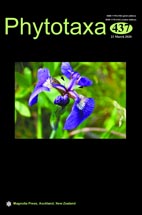Abstract
A new species of Sellaphora was found in modern and fossil sediments from shallow-lake Laguna Gemelas Este, Santa Cruz, Argentina. The new taxon was studied with light microscopy and scanning electron microscopy. We present a detailed analysis of its morphology, supporting its placement in the genus Sellaphora Mereschkowsky, and report the physico-chemical characteristics of the lake where it was found. Sellaphora mayrii sp. nov. is most similar to S. smirnovii Chudaev & Gololobova, a small-celled species first reported from Russia. Both species have in common the valve outline, but the new species from Argentina has a wider size range and, when observed with electron microscopy, is visibly different regarding stria pattern, central area, and shape of the areolae.

